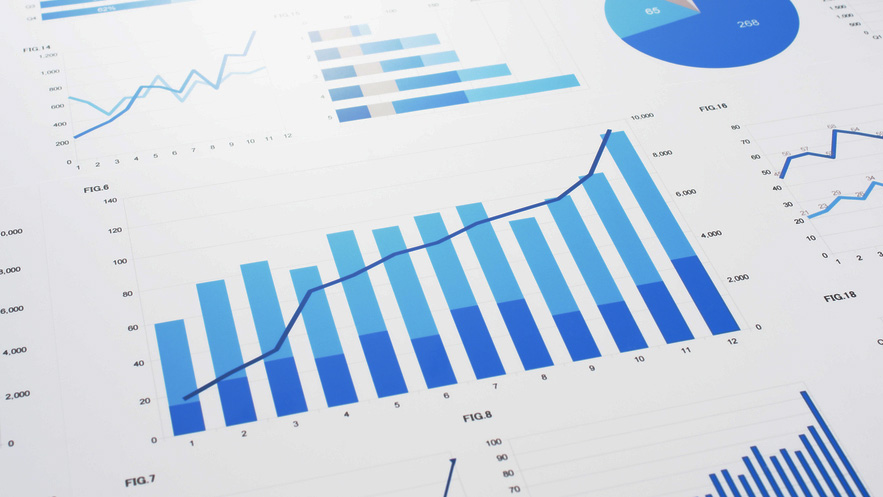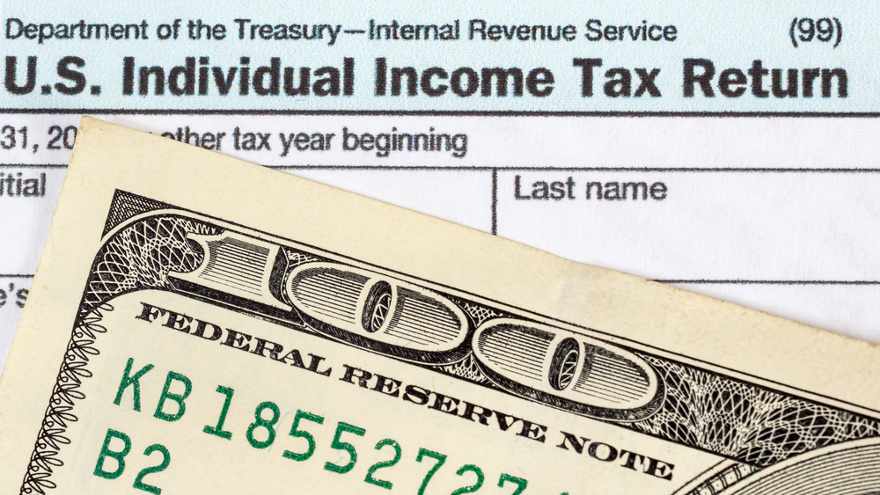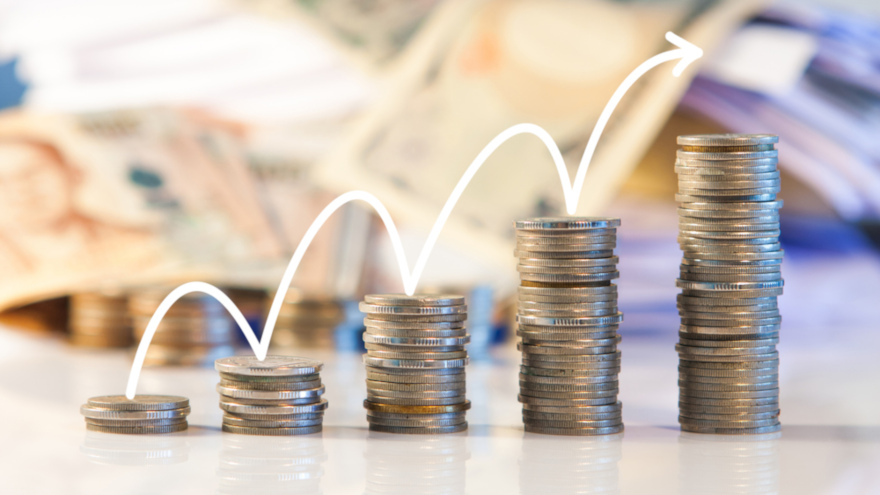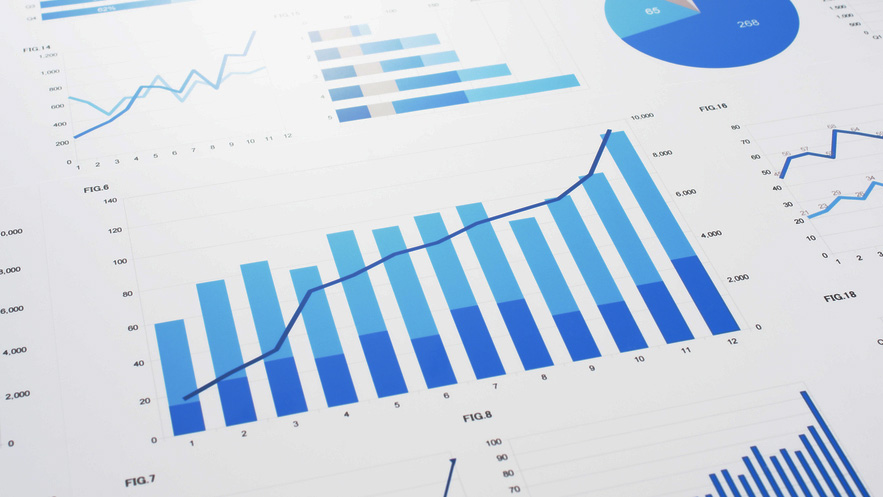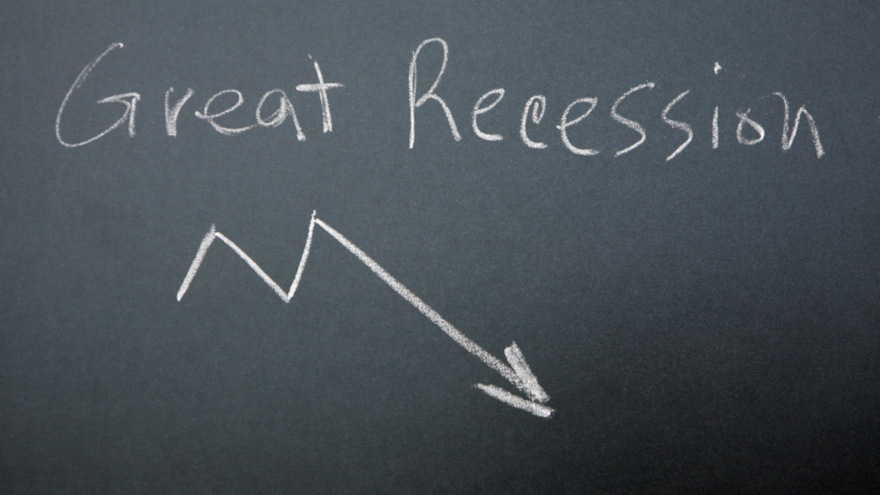One of the experts set to appear during the upcoming 23rd annual Non-Prime Auto Financing Conference hosted by the National Automotive Finance Association doesn’t have upbeat expectations of how the subprime auto finance space will perform.
Portfolio performance is expected to deteriorate soon, according to a 360-degree market study released last week by Credit Chronometer, a microsite authored by Joseph Cioffi, partner at Davis & Gilbert and a respected authority on credit markets.
Cioffi is part of the collection of nearly 60 executives, industry leaders and other distinguished speakers set to appear during the event, which begins on Wednesday in Plano, Texas.
From the NAF Association/AFSA Non-Prime Auto Financing Survey and a look at the auto ABS market to what’s being dubbed as “Fraud Friday,” this year’s event contains three days of informational presentations and networking opportunities.
“The program is very good. It covers many aspects of non-prime auto financing,” NAF Association executive director Jack Tracey said.
When given the opportunity to speak, Cioffi likely will be referencing his report titled, "Participants’ Expectations Point the Way to the Future of Subprime Auto." The project summarizes the results of an anonymous study of nearly 100 originators, investors, servicers, trustees and other securitization market participants, on topics such as credit quality, the sufficiency of credit enhancement protections and the ability to obtain and maintain desired credit ratings.
Cioffi explained in a news release that participants’ views in these areas diverge, at key points, from the generally upbeat sentiment publicly reported.
“This pessimism for the future exists despite a rosy past, given that a majority of respondents have not yet incurred a loss related to their participation in subprime auto securitizations,” said Cioffi, who is chair of Davis & Gilbert’s insolvency, creditors’ rights and financial products practice group.
Cioffi believes the securitization market’s historical success has been due in large part to the balance achieved by three interdependent factors: credit ratings, credit enhancements and credit quality. Cioffi refers to these as factors as “C3” and finds that participants’ responses indicate that “C3 equilibrium is being disrupted by recent performance,” which will impact credit enhancement levels and credit ratings.
The report described how market expectations will need to adjust to restore the balance.
Other key findings of the study include:
— A negative performance outlook is impacting participants’ views on the sufficiency of credit enhancements and the ability to achieve desired ratings.
— Investors express greater concern than other market participants regarding credit enhancement levels, especially for subordinated tranches.
— Credit quality concerns center on the vulnerability of subprime borrowers to changes in the economy.
The full report findings can be downloaded here.
Along with Cioffi, some of the experts slated to share their insights during the NAF Association’s conference include:
— Ben Werner, FICO
— Amy Martin, S&P Global Ratings
— Jonathan Smoke, Cox Automotive
— Chris Burt, GM Financial
— Michelle Whatley, Exeter Finance
— Eric Johnson, Hudson Cook
— Mark Edelman, McGlinchey Stafford
— Penny Campbell, Jefferson Capital Systems
— Kip Cochran, Texas Dealer Solutions
— Sharon Mancero, Wells Fargo Preferred Capital
— Kelly Blankenship and Richard Hudson, Ignite Consulting Partners
— Frank McKenna, PointPredictive
— Josh Wortman, General Forensics
Also, graduates of the NAF Association’s Certified Consumer Credit Compliance Professional Program can earn up to eight credits toward recertification during the conference.
Complete agenda and registration details are available at www.nafassociation.com.
Kroll Bond Rating Agency reported this week that its auto-finance indexes that watch both the non-prime and prime spaces moved in similar directions in April.
But a deeper look at the latest data showed some “slightly less sanguine results.”
Analysts indicated annualized net losses in KBRA’s Prime Auto Loan Index fell 5 basis points month-over-month and 12 basis points year-over-year to land at 0.60%. KBRA noted the number of borrowers more than 60 days delinquent declined 8 basis points month-over-month and 6 basis points year-over-year to 0.36%.
KBRA pointed out in its latest update that April marked the 15th consecutive month that net losses and delinquency rates have fallen on a year-over-year basis within its Prime Auto Loan Index.
KBRA went on to share that its Non-Prime Auto Loan Index for April showed a similar month-over-month trend with annualized net loses and 60-day delinquencies falling 129 basis points and 75 basis points to 7.18% and 4.20%, respectively.
On a year-over-year basis, analysts determined non-prime net losses declined 26 basis points in April, while 60-day delinquencies rose slightly, ticking up by 6 basis points.
“Although our indices showed improved year-over-year delinquency metrics during the March collection period, loan level data showed slightly less sanguine results,” said Brian Ford, who oversees structured finance research at KBRA.
“The number of prime and non-prime borrowers that went from 60-days delinquent to current in March came in at 24.8% and 21.5%, respectively. This is slightly lower than the 25.6% and 26.9% cure rate experienced in March 2018,” Ford continued.
“Meanwhile, the number of borrowers that were 60 days delinquent to start the month and were subsequently charged-off in March came in at 15.6% for prime loans and 22.0% for non-prime loans, versus 17.1% and 20.5%, respectively, one year ago,” he went on to say.
After reviewing first-quarter data connected with U.S. subprime auto loan asset-backed securities (ABS), S&P Global Ratings discovered cumulative net losses appear to have stabilized, albeit at “relatively high levels,” according to its newest report released on Tuesday.
On a segment basis, S&P Global Ratings said its subprime auto loan static index (ALSI) is showing that the 2016 vintage, with 27 months of data, is performing consistently with the 2015 vintage, as are the 2017 and first- and second-quarter 2018 vintages.
On an issuer basis, analysts noted loss deterioration abated with the 2017 vintage as the majority of the securitizers are reporting stable-to-lower losses on these securitized pools compared to those in 2016.
“These improvements appear to be correlated with the reduction in industry-wide subprime originations in 2016 and 2017 and the implementation of tighter credit standards,” analysts said in the report titled, Subprime Auto Loan ABS Tracker: Losses Have Stabilized, But Renewed Growth Bears Watching.
“However, renewed growth in subprime lending, which began in the second half of 2018, could intensify competitive conditions and lead to weaker performance,” they continued.
S&P Global Ratings shared five other key takeaways from the report, including:
• The upward ascent in subprime ALSI loss levels through 2015 and issuer-based loss deterioration through 2016 corresponded with the rapid growth in subprime financing and mounting competitive conditions from 2010 through 2015.
• Reduced subprime financing in 2016 and 2017, resulting from the implementation of tighter credit standards and operating procedures, paved the way for improved issuer-specific performance beginning with the 2017 vintage.
• Higher industry origination volume during the second half of 2018 may portend higher losses in the future.
• Credit enhancement levels have kept pace with the rise in losses, and upgrades continue to surpass downgrades by a wide margin.
• Subprime ABS issuers vary widely with their 2016 cumulative net losses ranging from a low of approximately 6% after 27 months to a high of 32%.
Analysts arrived at those assertions after determining performance in the U.S. auto loan asset-backed securities sector demonstrated seasonal trends as all prime and subprime performance metrics improved on a monthly and annual basis.
“The first quarter of the year marks the season of tax refunds, which consumers often use to pay down their loans,” S&P Global Ratings said in a separate news release.
“Since 2006, we have observed a month-over-month decrease in losses and delinquencies, and an increase in recoveries in February compared to January,” analysts continued. “February 2009 was the exception, when prime losses were 1 basis point higher than the January 2009 value of 1.92.”
“February was a strong performance month due to seasonal factors and several large issuers reporting year-over-year improved metrics,” analysts went on to say.
S&P Global Ratings reported that U.S. prime credit losses declined to 0.64% in February from 0.73% in January and 0.69% in February 2018, marking the 11th consecutive month of year-over-year improvement.
The firm indicated subprime losses decreased to 8.67% in February from 9.65% in January and 9.18% in February of last year.
Analysts pointed out recoveries improved year-over-year, rising to 55.98% from 53.91% for prime and to 41.41% from 39.21% for subprime.
S&P Global Ratings went on to mention the prime sector 60-plus-day delinquency rate decreased to 0.44% in February from 0.51% in January, and 0.46% from the year prior. The subprime 60-plus-day delinquency rate decreased to 4.98% from 5.63% in January, and 5.15% from the year prior.
“In March 2019, we lowered our expected cumulative net losses for 17 transactions, maintained them at prior levels for 10, and increased them for four,” analysts said.
Kroll Bond Rating Agency (KBRA) looked to calm concerns that tax refunds and other possible turbulence would trigger significant disturbances within the auto asset backed securities market.
Neither of KBRA’s indexes tracking at prime and non-prime ABS shifted substantially, as severe delinquencies remained relatively stable.
Securitized auto loan credit performance in March improved across virtually all the ABS shelves included in KBRA’s prime and nonprime auto-loan indices.
According to its March report, annualized net losses in KBRA’s prime auto-loan index fell to 0.65%, down 4 basis points month-over-month and 11 basis points year-over-year. Meanwhile, analysts noted the number of borrowers 60 days or more delinquent in March came in at 0.44%, a decline of 5 basis points versus February and 7 basis points versus March of last year.
KBRA’s non-prime auto loan index demonstrated similar trends in March on a sequential basis with annualized net loses and 60-day delinquencies falling 99 basis points and 48 basis points to 8.46% and 4.96%, respectively. On a year-over-year comparison, analysts said net losses dropped 52 basis points, while 60-day delinquencies were essential flat, ticking up just 2 basis points.
“With average federal refunds down just $20 year-over-year through the end of March ($2,893 in 2018 versus $2,873 in 2019), concerns that lower tax refunds could meaningfully impact ABS collateral performance appears overblown,” said Brian Ford, who oversees structured finance research at KBRA.
“We expect delinquency and loss rates will remain steady or continue to improve in April as borrowers continue to receive tax refunds, providing an additional source of cash flow to help them pay their auto loans,” Ford added in the latest report that’s available here.
Organizers of the 23rd annual Non-Prime Auto Financing Conference hosted by the National Automotive Finance Association have solidified their agenda that covers an array of topics again this year.
From the NAF Association/AFSA Non-Prime Auto Financing Survey and a look at the auto ABS market to what’s being dubbed as “Fraud Friday,” this year’s event contains three days of informational presentations and networking opportunities, beginning on June 5 in Plano, Texas.
“The program is very good. It covers many aspects of non-prime auto financing,” NAF Association executive director Jack Tracey said.
Some of the experts slated to share their insights during the conference include:
— Ben Werner, FICO
— Amy Martin and Rahel Avigdor, S&P Global Ratings
— Jonathan Smoke, Cox Automotive
— Chris Burt, GM Financial
— Michelle Whatley, Exeter Finance
— Eric Johnson, Hudson Cook
— Mark Edelman, McGlinchey Stafford
— Penny Campbell, Jefferson Capital Systems
— Kip Cochran, Texas Dealer Solutions
— Sharon Mancero, Wells Fargo Preferred Capital
— Kelly Blankenship and Richard Hudson, Ignite Consulting Partners
— Frank McKenna, PointPredictive
— Joe Cioffi, Davis & Gilbert
— Josh Wortman, General Forensics
Also, graduates of the NAF Association’s Certified Consumer Credit Compliance Professional Program can earn up to eight credits toward recertification during the conference.
Complete agenda and registration details are available at www.nafassociation.com.
S&P Global Ratings took its turn on Tuesday to add more context to the headline-creating and social-media stirring auto-finance data released by the Federal Reserve Bank of New York. Credit analyst Amy Martin led the charge looking closely at subprime auto loan asset-backed security (ABS) market.
Martin acknowledged the New York Fed highlighted Equifax data that showed delinquencies were on the rise with 90-day delinquencies reaching 4.47 percent for the fourth quarter of 2018 and marking the highest level since the first quarter of 2012.
“Our outlook for subprime auto loan ABS is more sanguine than the delinquency increase may seem to imply,” Martin said in a report titled, “The Severity of Subprime Auto Loan Delinquencies Is in the Eye of the Beholder.”
“For one, our rating approach is very issuer-centric and generally focuses more on losses than delinquencies — and losses have risen at a much slower rate. To the extent we’ve observed deterioration in an issuer’s performance, credit enhancement (the cushion available to cover loan losses) is generally sized to take that into account,” continued Martin, a member of the initial collection of honorees for Women in Auto Finance showcased during Used Car Week 2018.
S&P Global Ratings shared the report with SubPrime Auto Finance News. The report detailed four causes higher delinquencies in the data analysts track, including:
— Growth in subprime originations during an intensely competitive period
— A composition shift to include more deep subprime financing
— Softer/gentler collection strategies
— Later repossessions and charge-offs by some finance companies
Analysts first delved into the origination growth happening in subprime.
“As the economic recovery was getting underway around 2010, existing lenders, most of which had tightened their credit standards during the recession, started to ease their lending parameters and grow originations. Also, many new players emerged, some funded with private equity,” S&P Global Ratings said in the report.
“As competition heated up, the discounts at which finance companies purchased auto loans from dealers started to evaporate, causing profit margins to thin. Some lenders responded by building scale, with their greater lending levels accompanied by weaker credit quality and higher delinquencies and losses,” the firm continued.
Next, analysts discussed the composition shift, pointing out that prior to the recession, there were few securitizers that catered to the deep subprime segment.
“That has since changed,” S&P Global Ratings said, reiterating that it defines deep subprime as those pools with cumulative net losses of 20 percent or more. The firm also noted that generally the contract holders in these pools have either no credit score or a FICO reading below 550.
S&P Global Ratings mentioned new securitizers in the deep subprime space include Santander through its DRIVE platform, American Credit Acceptance, Exeter Finance and J.D. Byrider (also known as CarNow Acceptance).
“With this growth in deep subprime lending, we believe there has been a shift where consumers with either no credit history or very derogatory ones are buying and financing their vehicles,” analysts said in the report. “When credit was scarce, many of these borrowers could purchase only a high-mileage used vehicle at either an independent used car dealership or a buy-here, pay-here lot.
“Given the plethora of subprime lenders today and the turndown programs between prime lenders and their subprime lending partners, some of these consumers can now buy new vehicles or low-mileage used vehicles at either new-vehicle franchise stores or large used-vehicle mega-dealership chains,” they continued.
Because deep subprime securitizations have grown to 38 percent of securitized subprime auto loans in 2018 from only about 11 percent in 2015, S&P Global Ratings explained that its monthly auto loan tracker data includes a modified index to normalize the composition.
The latest monthly update from S&P Global Ratings showed that subprime losses decreased to 9.58 percent in January from 10.15 percent in December and 9.98 percent in January of last year due to lower losses in Santander’s SDART and DRIVE transactions.
Analysts added January recoveries improved year-over-year, from 38.80 percent from 33.56 percent for subprime. S&P Global Ratings pointed out that last January’s subprime recovery rate was negatively affected by GM Financial’s servicing system upgrade.
And speaking of recoveries, that report titled, “The Severity of Subprime Auto Loan Delinquencies Is in the Eye of the Beholder,” continued by touching on more lenient collection policies used by some finance companies. S&P Global Ratings described them as “softer and gentler.”
In some cases, S&P Global Ratings acknowledged these changes are in response to increased regulatory oversight, which has shed light on alleged fair debt collection violations. These relaxed collection practices include calling the delinquent borrower fewer times, refraining from calling the borrower’s references and no longer calling the borrower’s place of employment upon his or her request.
“As a result, it sometimes takes longer to arrange a payment plan with the borrower or to locate the vehicle for possible repossession, thereby keeping the account in delinquency status longer,” analysts said in the report. “In other cases, greater tolerance for late payments is due to management supporting the practice that it’s better to keep a delinquent customer who is making payments (albeit late or only partial ones) than to repossess the obligor’s vehicle, which is likely to result in a higher severity of loss.
“Less aggressive collection practices have also contributed, in some cases, to higher extension rates,” they continued. “When granting extensions, however, most lenders do so in a manner that brings the delinquent obligor’s account current. If a delinquent obligor has, however, exhausted the lender’s maximum number of extensions, his/her account would likely be accounted for as delinquent.
“Further, there may be some situations in which an extension does not bring an account current,” they added.
With less intense collection practices, S&P Global Ratings is seeing later repossessions and charge-offs.
“In line with allowing customers more time to resume payments before repossessing vehicles, some lenders have lengthened the time that an account may be delinquent until it is charged off,” the firm said in its report.
“DriveTime did this at the end of 2011, and such action caused a significant rise in their 31-day delinquencies, to 17.9 percent at year-end 2012 from 11.20 percent a year earlier. That said, losses rose only marginally (to 14.0 percent from 13.2 percent),” S&P Global Ratings went on to say.
What do all of the trends and data points mean? Martin summed up the situation this way.
“Indeed, the weighted average expected cumulative net losses on the transactions we’ve rated have grown to approximately 20 percent in 2018 from 12.5 percent in
2011 and, at the same time, ‘AAA’ credit enhancement has increased to approximately 54 percent on a weighted average basis from 36 percent,” Martin said.
“As a result, our outlook for investment-grade subprime auto loan ABS ratings is in a better place than one might assume given the trend in delinquencies,” Martin went on to say while adding this report does not constitute a rating action.
Finance companies sometimes give grace to contract holders in hopes the individual can get back on the payment track since it’s potentially much more lucrative than having to go through the repossession and recovery processes.
Kroll Bond Rating Agency (KBRA) released a research report last Friday, examining the use of subprime auto finance extensions as a loss mitigation tool for ABS servicers. After taking a closer look at the performance of a specific provider, KBRA believes, in general, that the use of extensions ultimately benefits ABS investors by reducing delinquency and default rates.
However, analysts acknowledged a high rate of extensions within a securitized collateral pool can meaningfully increase bond duration and expose ABS investors — particularly owners of deeply subordinated tranches — to tail risks.
“As such, it is important for investors to understand each servicer’s policy regarding extensions, as well as how extensions are handled within ABS deal structures,” KBRA said.
Kroll Bond Rating Agency senior director of structured finance research Brian Ford shared the report with SubPrime Auto Finance News. Ford explained the project stemmed from the strategy used by Honor Finance in connection with its securitization launched in 2016.
Ford recapped that by early last year, Honor Finance granted extensions to as much as 22 percent of the contracts in the securitization, “well in excess of industry standards … which can mask poor collateral performance — i.e., by keeping delinquencies and default rates artificially low.”
Ford added in the report that “it is important for investors to understand each servicer’s policy regarding extensions, as well as how extensions are handled within ABS deal structures.”
The report touched on strategy employed by many finance companies regarding extensions. Some basic parameters often include:
— Customer must have paid a minimum of six to 12 contractual payments.
— Customer may not have had an extension during the preceding 12-month period.
— One extension occurrence of one or two months may be approved during any 12-month period, with a maximum of seven occurrences for contracts greater than 72 months.
—If the account is delinquent, the extension must bring the account completely current and resolve the delinquency at the time the extension is considered.
Ford pointed out that subprime issuers report monthly extension rates ranging between 2 percent and 6 percent. He added that most of the auto finance companies that KBRA rates actively monitor the success of their extension policy.
“Only a hand full of subprime auto loan securitizations contain specific structural triggers limiting the amount of extensions within the securitized pool,” Ford wrote in the report, referencing operations such as DriveTime and Tidewater.
“However, the legal final maturity of longest dated note class is typically set to equal the tenor of the longest receivable within the securitized pool, plus the maximum number of months that loan can be extended, per the issuer’s policy,” he continued. “Securitization documents typically include provisions that require the servicer to repurchase receivables that are extended past the maturity date of the bonds.
“Investors should understand each servicer’s extension policy and review transaction documents to determine what protections exist to reduce extension risk,” Ford reiterated.
S&P Global Ratings published a report on Friday, examining adjustments in auto-related asset-backed securities (ABS) transactions since the Great Recession.
The 16-page endeavor took a special look at the subprime market, explaining that speculative-grade issuance growth and weaker structural protections could lead to more rating volatility. S&P Global Ratings made that assertion in the report shared with SubPrime Auto Finance News, titled, “10-Year Retrospective: Changes in U.S. Auto ABS in the Decade Since the Great Recession.”
Analysts began their discussion by noting one major change for subprime auto ABS during the past decade has been the replacement of bond insurance with internal forms of credit enhancement. Prior to 2008, S&P Global Ratings indicated most subprime issuers relied on bond insurance as the primary form of credit enhancement for their AAA rated transactions.
However from 2008 to 2010, bond insurer downgrades led to many auto ABS downgrades, according to S&P Global Ratings.
"At the same time, subprime issuers faced liquidity issues as lenders, and the debt market shunned riskier forms of lending,” analysts said in the report. “This led to a significant contraction in the number of subprime auto loan ABS issuers.”
After the recession and as the economic recovery strengthened, S&P Global Ratings pointed out that market participants adjusted to the lack of bond insurers. The number of subprime issuers receiving ABS standalone ratings from S&P Global Ratings increased to 18 in 2018 from only three in 2008. That trio included AmeriCredit, Credit Acceptance and Consumer Portfolio Services.
Analysts recollected many of the new issuers first came to the market with capped ratings of A (sf) or AA (sf), But over time, analysts acknowledged some issuers have achieved AAA (sf) ratings.
S&P Global Ratings explained that credit enhancement for these deals have been provided through the structure, with AAA (sf) rated bonds being able to withstand approximately 70 percent to 93 percent in cumulative gross losses, depending on the base-case loss level.
“The bond insurers’ departure has resulted in fewer structural protections, including performance triggers,” analysts said in the report. “Some of these triggers, if breached, increase the amount of credit enhancement available to noteholders, depending on how tightly they are structured.
“Also, without the structuring influence and the control party responsibilities of the bond insurers, there is more risk should the servicer encounter financial or other difficulties,” they continued. “Previously, poor pool performance or weak servicer financial results would allow the bond insurer to replace the servicer. Those provisions have been removed, making it more difficult to transfer servicing quickly in advance of more serious credit deterioration.
“Further, the bond insurers had more stringent conditions regarding extensions and modifications than we see today in subprime auto loan ABS transaction documents. The looser standards potentially expose subordinated investors to more back-end credit risk,” analysts went on to say.
S&P Global Ratings closed its discussion about the subprime ABS market by making one more assertion.
“Given the absence of bond insurers as control parties and key structuring agents, and the proliferation of speculative-grade classes in subprime autos, we believe speculative-grade subprime auto loan ABS are now more susceptible to downgrades than in the past,” analysts said.
S&P Global Ratings also went into great detail on how automaker bankruptcies impacted the auto ABS. For the full 10-year retrospective report, go to this website.
The newest S&P Global Ratings report indicated the U.S. auto loan asset-backed securities (ABS) market in November performed where finance companies likely expected, especially for participants within the subprime space.
And when analysts extracted a trio of companies that securitize paper in the deep part of subprime, the metrics looked even more in line with presumed expectations.
S&P Global Ratings explained, “The subprime segment saw mixed performance, with losses and delinquencies weakening on an annual basis and recoveries improving moderately.”
The data from S&P Global Ratings showed that subprime losses increased to 9.33 percent in November from 9.19 percent in October and 8.84 percent in November 2017.
However, after netting out three deep subprime securitizers, analysts found that their modified subprime index showed that losses decreased to 7.08 percent in November from 7.25 percent in October and 7.16 percent in November 2017.
Meanwhile, S&P Global Ratings mentioned the U.S. prime auto loan sector continues to report improved performance.
Prime credit losses have declined year-over-year since April, decreasing to 0.65 percent in November from 0.69 percent in October and 0.75 percent in November 2017.
“Tighter credit standards, better pool mixes and compositional factors have contributed to the reduction in prime losses,” analysts said.
S&P Global Ratings also noted recoveries increased year-over-year during November, rising to 56.4 percent from 50.7 percent for prime, to 37.9 percent from 37.4 percent for subprime, and to 38.6 percent from 37.9 percent for its modified subprime segment
While experts consider rising interest rates impacting paper currently entering portfolios, S&P Global Ratings highlighted that collateral performance for the U.S. auto loan asset-backed securities (ABS) market improved in August on a year-over-year basis.
In both the prime and subprime sectors, analysts found that annualized losses declined, delinquencies inched downward and recoveries increased from their year levels, but monthly comparisons were mixed.
As losses continued their seasonal second-half climb, delinquencies were stable, prime recoveries were unchanged, and subprime recoveries increased, according to S&P Global Ratings.
The report titled, U.S. Auto Loan ABS Tracker: August 2018, and shared with SubPrime Auto Finance News this week indicated prime cumulative net losses increased month-over-month but improved year-over-year as the August reading came in at 0.53 percent in August. In July, the reading stood at 0.56 percent while a year ago it was 0.76 percent.
Analysts noted subprime net losses increased for the third month in a row, rising to 8.66 percent in August from 7.81 percent in July. Similar to prime net losses, S&P Global Ratings found that subprime net losses also declined year-over-year as last August’s level was 8.97 percent.
“The August net loss numbers reflect normal seasonal trends wherein losses generally have an upward trajectory during the second half of the year,” analysts said in the report.
As a supplement to its subprime index, S&P Global Ratings created the modified subprime index, which excludes certain high-loss deep subprime issuers, including Santander Drive Auto Receivables Trust, American Credit Acceptance Receivables and Exeter Automobile Receivables Trust.
Analysts indicated the modified subprime loss rate increased to 6.92 percent in August from 6.18 percent in July, but the reading dipped from the year-ago mark of 7.09 percent.
Looking at delinquency, S&P Global Ratings said the prime sector 60-plus-day delinquency rate remained stable month-over-month at 0.43 percent in August; the same reading as July. A year earlier, the metric came in at 0.51 percent.
Analysts pointed out that the subprime sector 60-plus-day delinquency rate also remained stable as both the July and August readings came in at 5.00 percent. It also represented a slight improvement year-over-year since last August’s figure was 5.10 percent.
S&P Global Ratings added delinquencies within the modified subprime sector improved in August, dipping to 3.47 percent from 3.57 percent in July and 3.77 percent in August of last year.
Rounding out the latest update, S&P Global Ratings mentioned the prime recovery rate sustained a minor dip to 57.79 percent in August from 57.87 percent in July. But the metric improved year-over-year since last August’s rate was 55.26 percent.
Analysts went on to note subprime recoveries improved to 41.06 percent in August from 40.33 percent in July and 39.15 percent in August 2017. They pointed out that the subprime modified composite weakened a bit with lower recoveries of 40.83 percent in August, compared to 41.23 percent in July. But that rate ticked up from 39.30 percent registered last August.
S&P Global Ratings closed by sharing some additional analysis that might be useful as finance companies track their own vintages. The firm said it compared losses for many of the issuers to their respective indexes over the past several years, finding that the majority of the issuers have experienced higher cumulative net losses on their 2015 securitizations than their 2014 counterparts.
“More specifically, while cumulative net losses on prime 2015 securitizations are trending significantly higher than 2014, the rate of deterioration has slowed for the 2016 vintage and the 2017 vintage with nine months of performance, is demonstrating better performance relative to 2016,” analysts said.
“The 2015 subprime vintage is reporting higher cumulative net losses than for 2014, but the 2016 vintage is performing slightly better than 2015. The 2017 subprime vintage has only nine months of performance and appears to be in line with 2016,” they continued.
In September, S&P Global Ratings said it revised expected cumulative net losses on one Flagship transaction, three AmeriCredit Automobile Receivables Trust transactions, two GM Financial Consumer Automobile Receivables Trust transactions and five First Investor Auto Owners Trust transactions.
“Of the 11 transactions we reviewed, six had downward loss revisions, and five were from 2017 because these have now seasoned sufficiently for us to use actual deal performance to project losses going forward, which usually occurs after 12 to 18 months,” analysts said.


